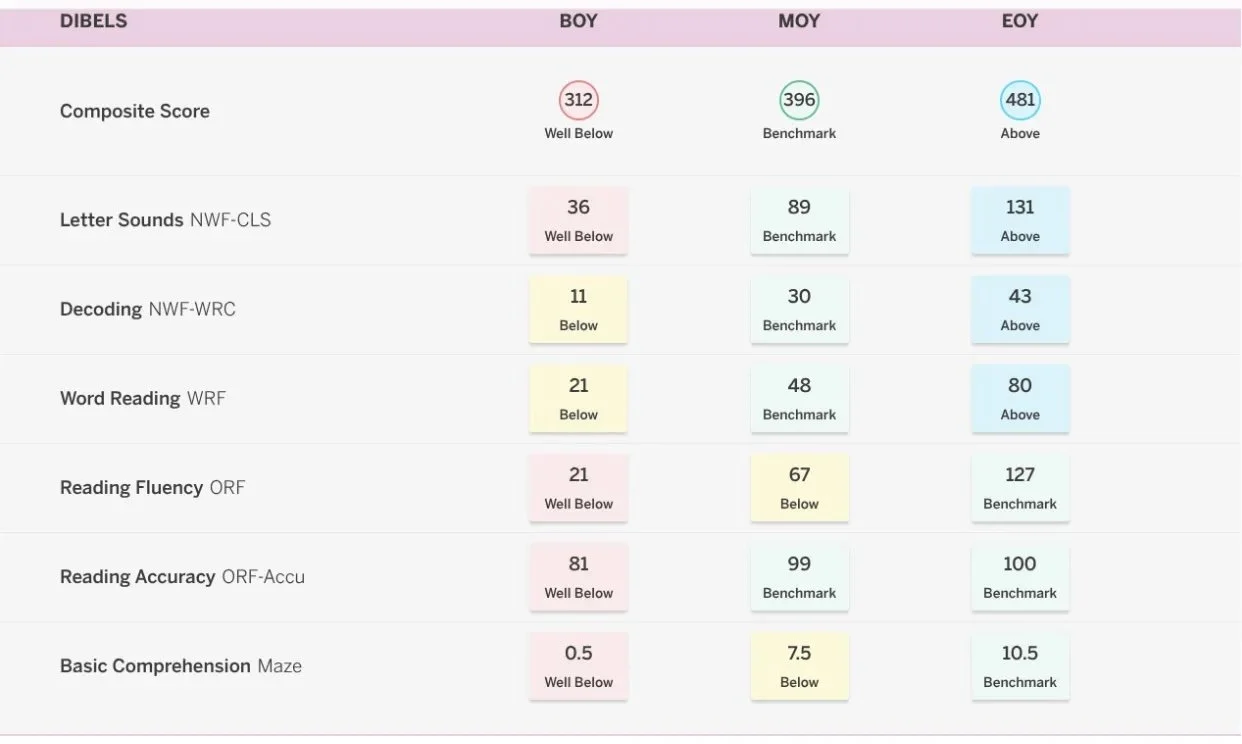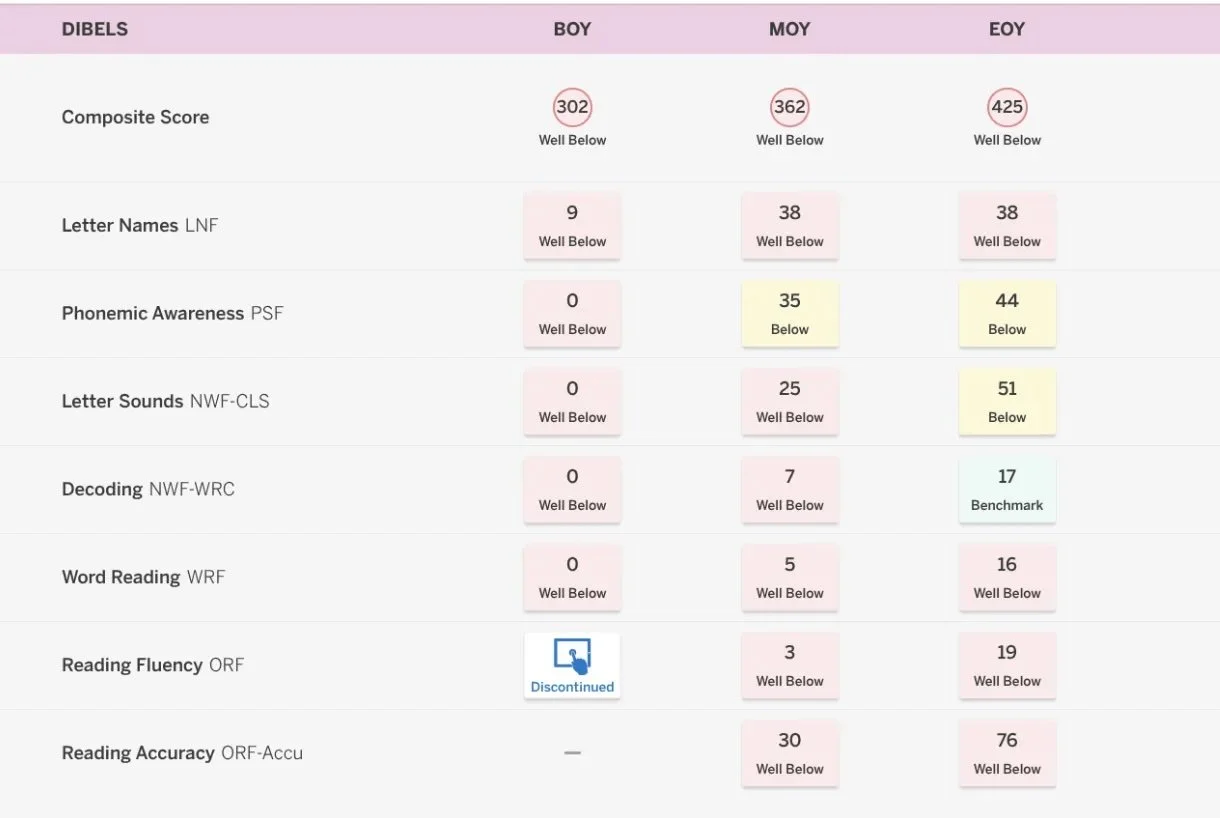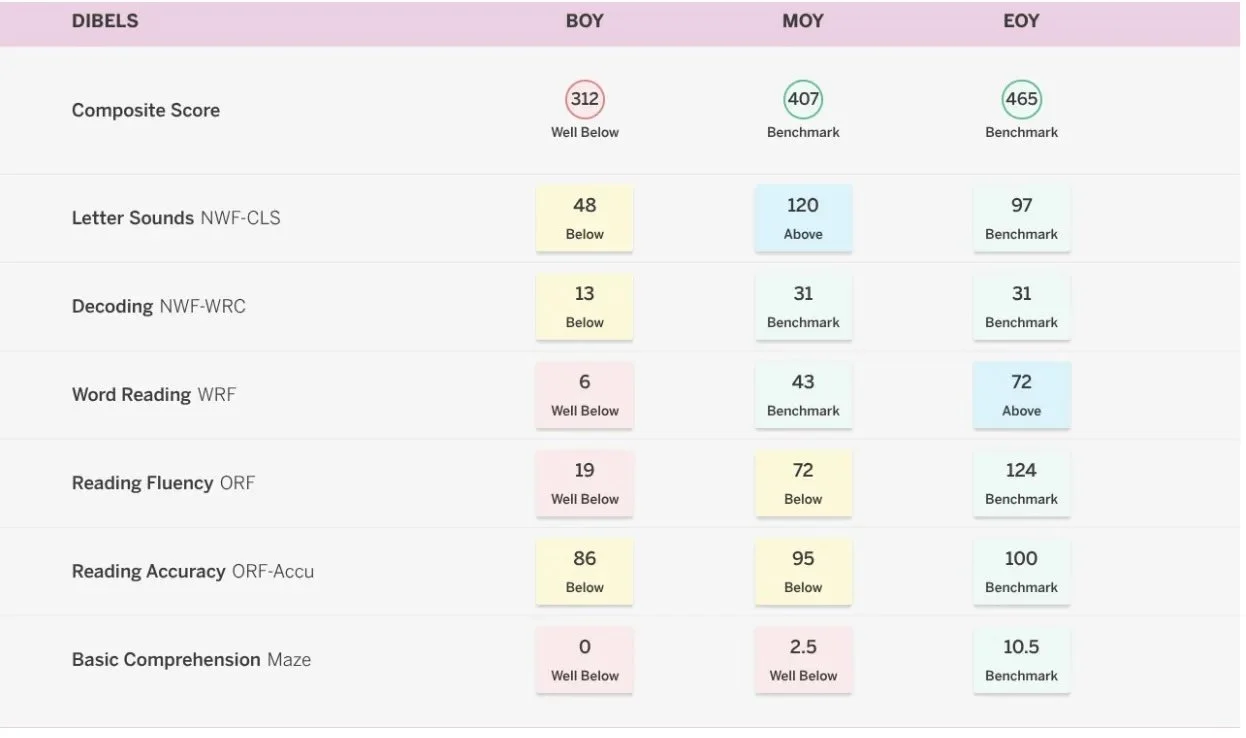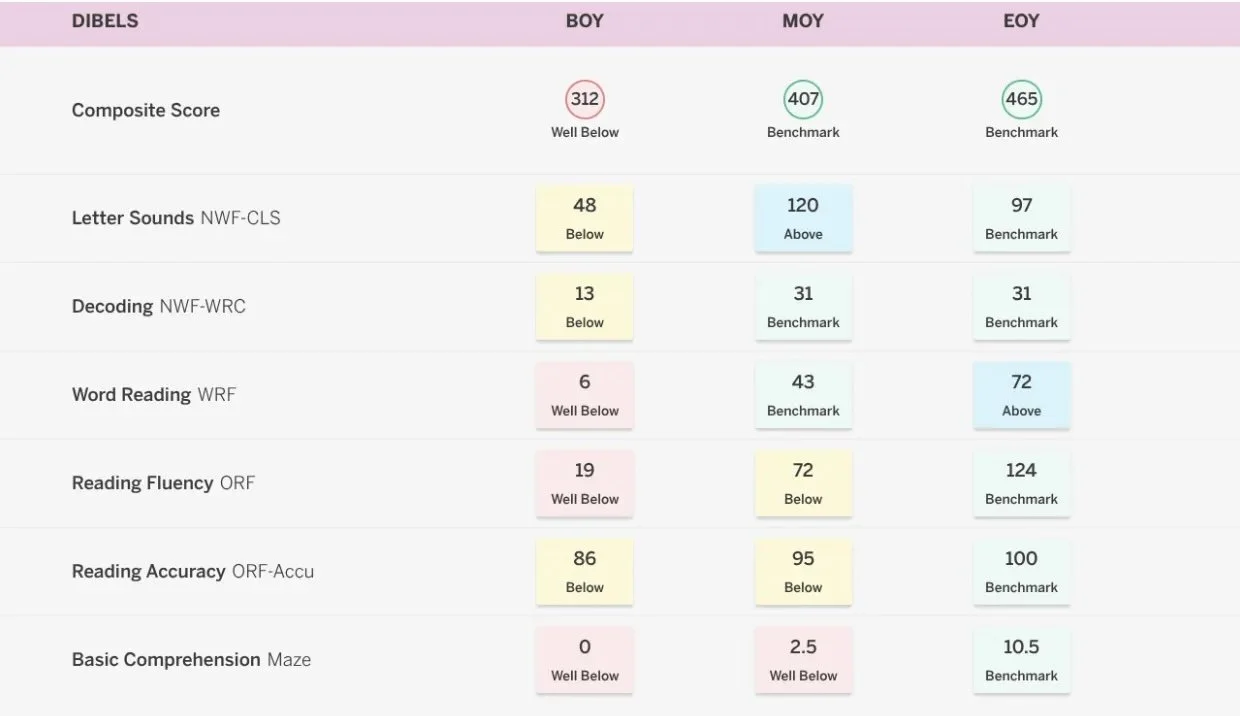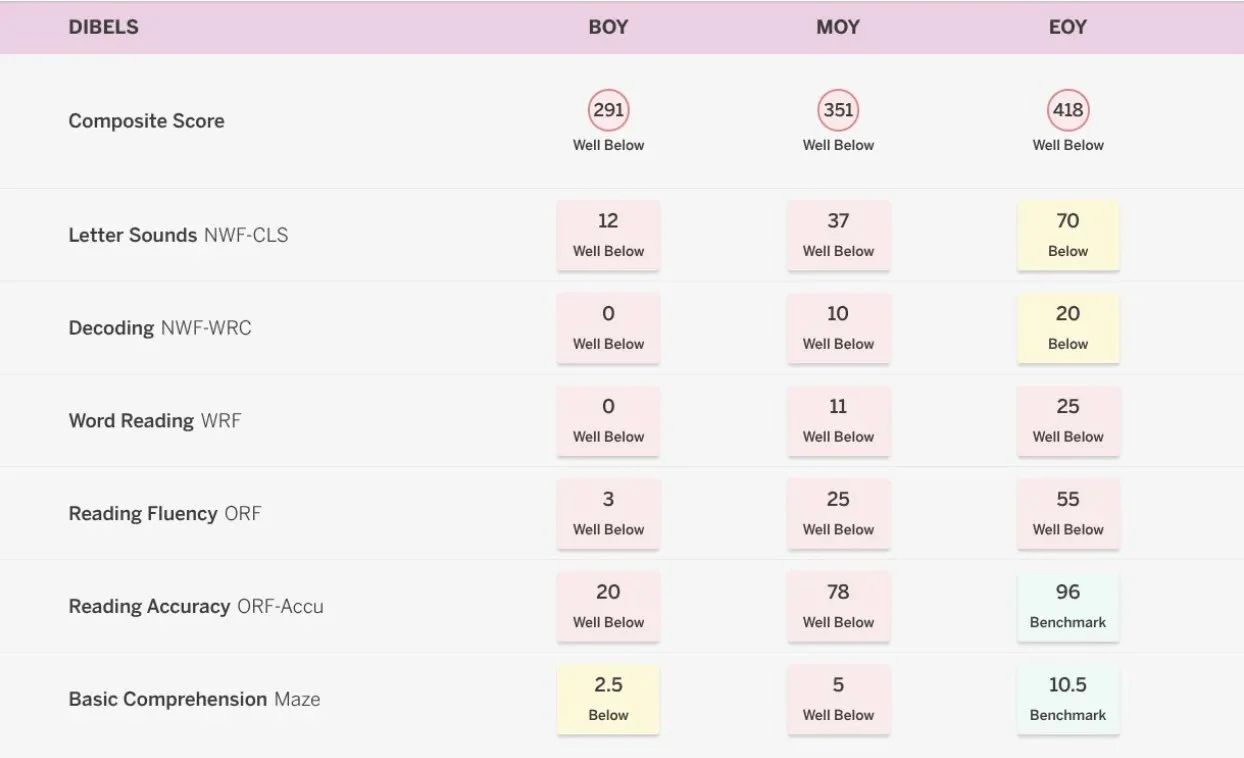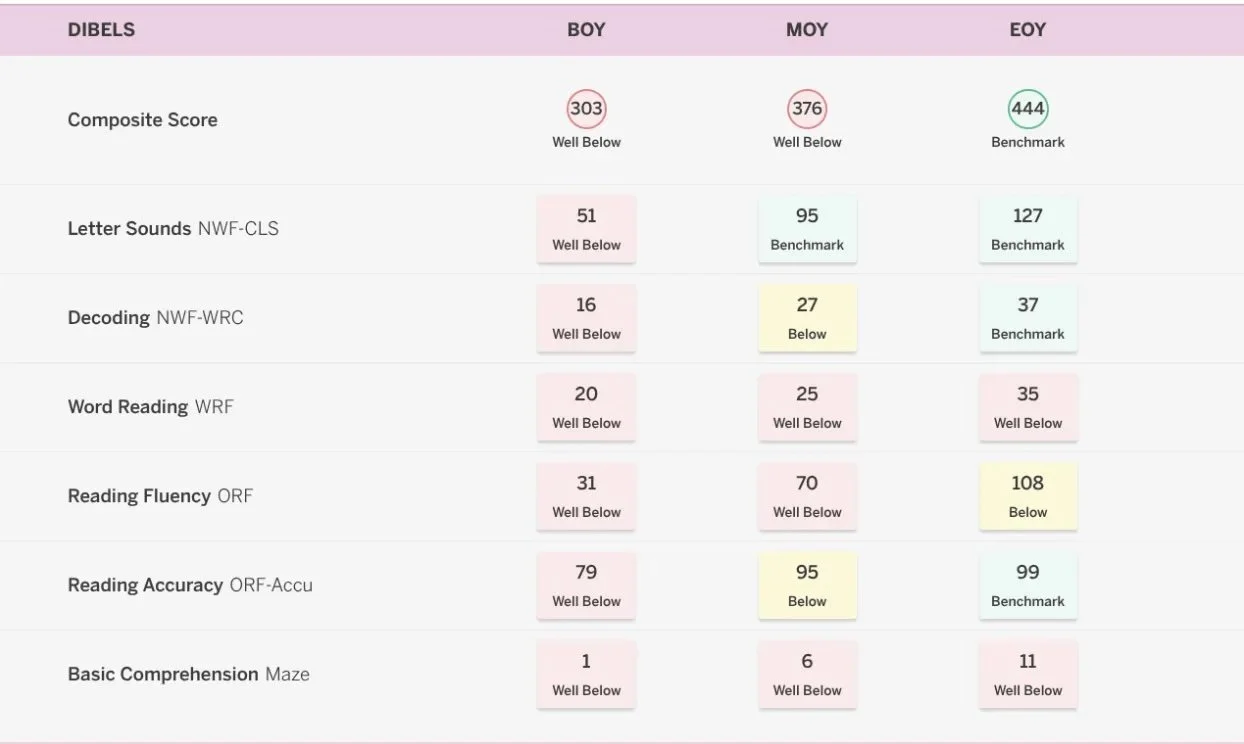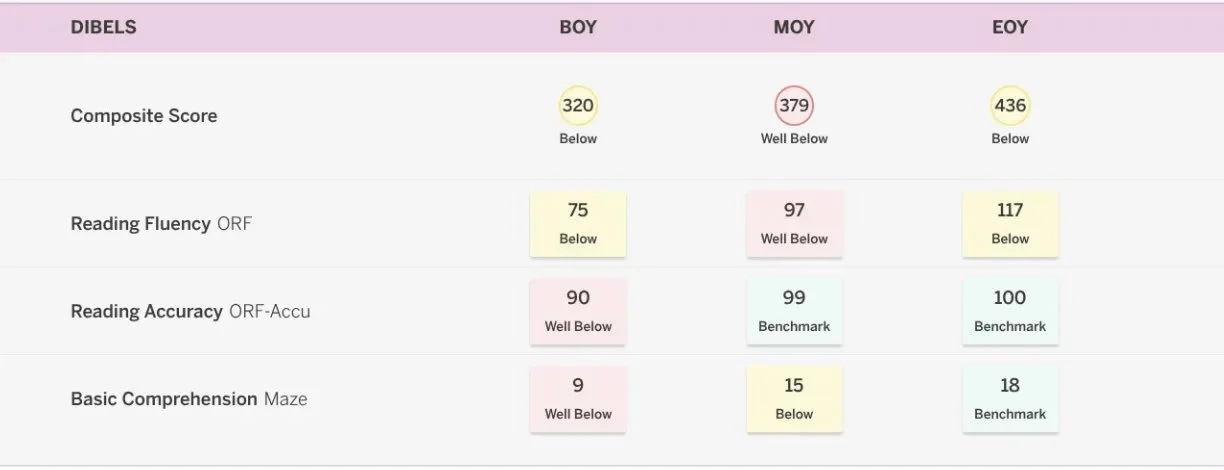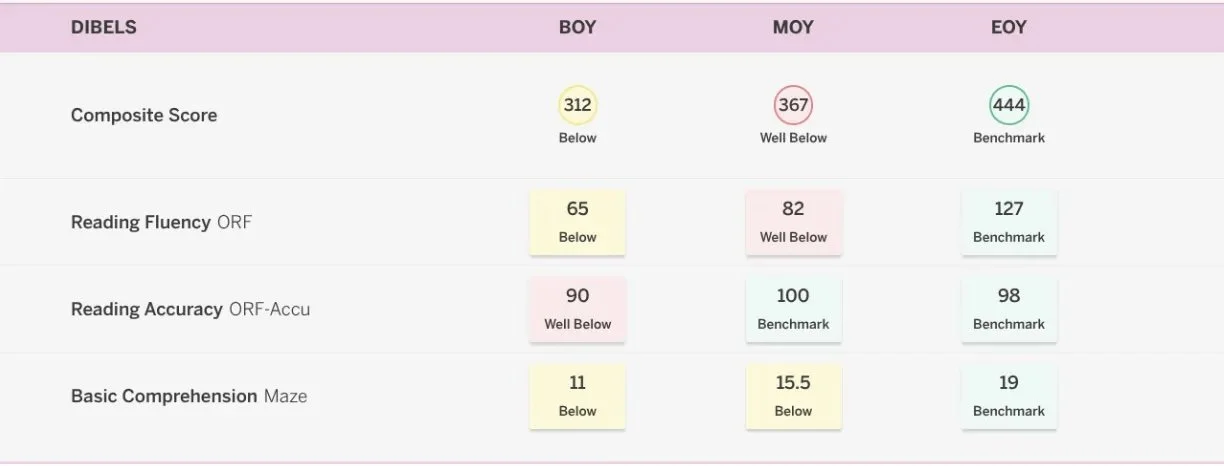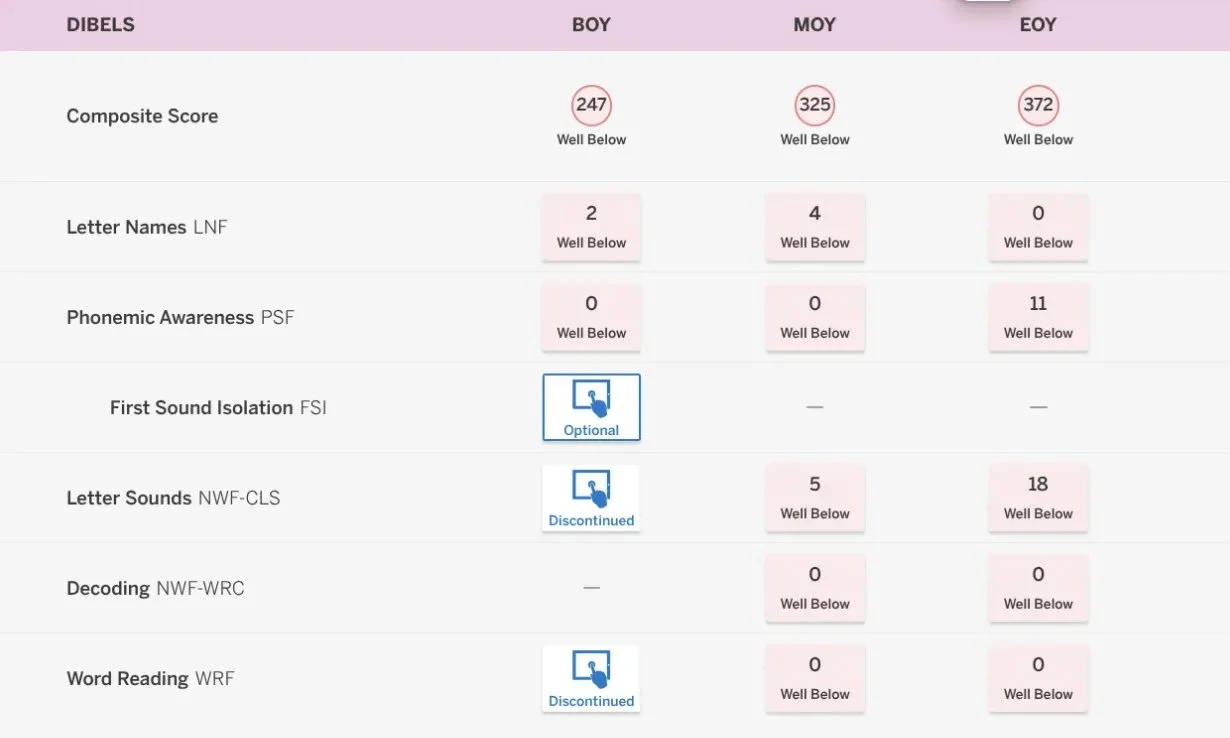Accelerating Student Progress with EBLI: Student Data Profiles
The purpose of Tier 3 intervention is to increase intensity for those students that have already received extra support and are still falling behind their peers. An interventionist's role is to help catch those students up to grade level and keep them from falling further behind. To achieve this, typical progress is NOT enough. We need to accelerate their progress. These students must learn at a faster rate than their peers; otherwise they have no chance of catching up. My job, as an interventionist, is to find what will accelerate their progress.
I work in a Title 1/dual language school where many children are MLLs or ELLs. The majority of students in our district rely on the instruction they get in school to support their learning needs. They do not have the means to seek out private tutors when they have large deficits in learning.
Over the past several years I have had success implementing structured literacy lessons and helping my students make progress, but the acceleration piece has been harder to achieve until this year.
A year ago, I became EBLI trained and started using it in intervention with my students. The results have surprised me. At this point in the year, I have exited 26 students from intervention, meaning that these students not only made progress but caught up to their peers.
What follows is a sampling of my students across K-4 that have worked with me and engaged in EBLI lessons this year. Most of these students received at least a year of solid Tier 1 instruction if not two years. Some have been in structured literacy interventions in their past, but not all. Some have been in dual-language classrooms and were not making progress in either language. Some students remain with me in intervention, but many have exited the intervention groups that they began in. Overall, the majority of the well-below students were able to exit intervention by January if they started in late September or by March if they started in January. There are a few that are just beginning their EBLI journey and some that will need more time before I’m comfortable returning them to core instruction alone.
Regardless of where they started or where they are now, almost every single one is an accurate reader, and many have become automatic readers too. They are also doing well in comprehension measures. Along with that, the acceleration that you are seeing here has been unprecedented. It is unlike anything I have encountered before in my intervention work. These students are not only “catching up” but they are doing so at an accelerated rate. That acceleration is what has been missing all along.
Student A:
Student A is a 2nd grade student. This student received good core instruction in both kindergarten and 1st grade. He started the year as a concern and was put into a Tier 3 intervention with me. After about 24 EBLI lessons I decided to exit him out of this intervention in January. With a solid base in place, he continued to grow in Tier 1 throughout the remainder of the year.
Student B:
Student B is a kindergarten student that received Tier 1 and Tier 2 with her classroom teacher through the end of January. The MOY Benchmark is taken in December right before winter break. She came to the EBLI intervention at the end of January, but missed some school due to a family situation. She had 18 sessions of EBLI, and then I decided to exit her from intervention. These were her EOY scores. Currently, she is able to participate in class like her peers.
Student C:
Student C is a 1st grade student that has never been to preschool or kindergarten. She had a lot of acclimating to do at the beginning of the year. You can see that she was starting from a huge skill deficit at the beginning of the year. Although her scores are not all at Benchmark, she is much closer to attaining that. What is most apparent is that she has caught up to the other students that are at the lower end of her grade level. She has made accelerated growth and with a little more instruction will get to where she needs to be.
Student D:
Student D is a 2nd grade student. This student received good core instruction in both kindergartner and 1st grade as well as interventions in 1st grade through Amplify’s Burst lessons, which are structured literacy lessons. She came into 2nd grade as a struggling student. She started intervention with me in the Fall and stayed until winter break. You can see her MOY scores were much improved, and then even once she left EBLI, she continued to grow. She did not make this kind of growth in her previous intervention work, which is evident from the BOY scores.
Student E:
Student E is another 2nd grade student. This student received good core instruction in both kindergarten and 1st grade as well as interventions in 1st grade through structured literacy lessons. This particular child also struggles with impulsive behaviors and has needed a lot of help controlling himself around his classmates. Even with a challenging home life, he made progress in his EBLI intervention. I let him exit after the MOY Benchmark, and you can see he continued to grow throughout the EOY. His behaviors, while still impulsive, have improved as well.
Student F:
Student F is a 2nd grade student that received good core instruction in kindergarten and 1st grade. He was in a 15 minute intervention in kinder and then in a longer structured literacy intervention in 1st grade. At the time that he began EBLI lessons, nobody exactly knew how to help him. I was eager to try EBLI with him—and it is working. Although his scores are not completely reflective of the way that he can pick up his second grade texts and read them, they do show accelerated growth. This child now tells us that he needs more of a challenge.
Student G:
Student G is a 3rd grade student that was in a dual language classroom through almost the middle of the year. She was also receiving bilingual interventions. She switched into an English classroom because her parents decided that English seemed more natural to her. She joined my EBLI group in January when we returned from winter break. You can see the progression and acceleration from MOY to EOY. She was able to exit interventions at the end of March.
Student H:
Student H is a 4th grade student that was in the Below category at the BOY, so he was not picked up for interventions. When the Benchmark was raised by MOY, he fell further behind and was then added to my EBLI group in January after winter break. Although his composite is a few points from Benchmark, you can see both his accuracy and rate increased as well as his comprehension score. He was able to exit interventions by the end of March. He had 35 EBLI lessons before he was able to exit.
Student I:
Student I is a 4th grade student that scored in the Below category at the BOY, so he was not picked up for interventions. When the Benchmark was raised by MOY, he fell further behind and was then added to my EBLI group in January after winter break. He was also able to exit at the end of March, and you can see his EOY scores now put him at Benchmark in all areas.
Student J:
Student J is a Kindergarten student. She was picked up for Tier 3 interventions at the very end of January. She worked with a different interventionist until the beginning of April. The EOY assessment was given after this student had 8 sessions of EBLI. While she is clearly still struggling, you can already see some gains that she is making that she has not made previously. Her biggest weakness is her PA and blending sounds together.
EBLI has been a game changer for me and my students this year. I think it has been so successful because it combines cognitive science, integration, pacing, and authentic texts to accelerate learning. The entire program is based on principles of cognitive science like cognitive load theory and interleaving. Moreover, it is integrated so it incorporates reading, writing, and spelling into every lesson. Students are introduced to patterns at an increased rate and are provided immediate corrective feedback. Mastery is not expected in the moment, but rather over time. EBLI also utilizes engaging authentic texts early on and allows students to use their flexibility with sounds to help them learn to read.

